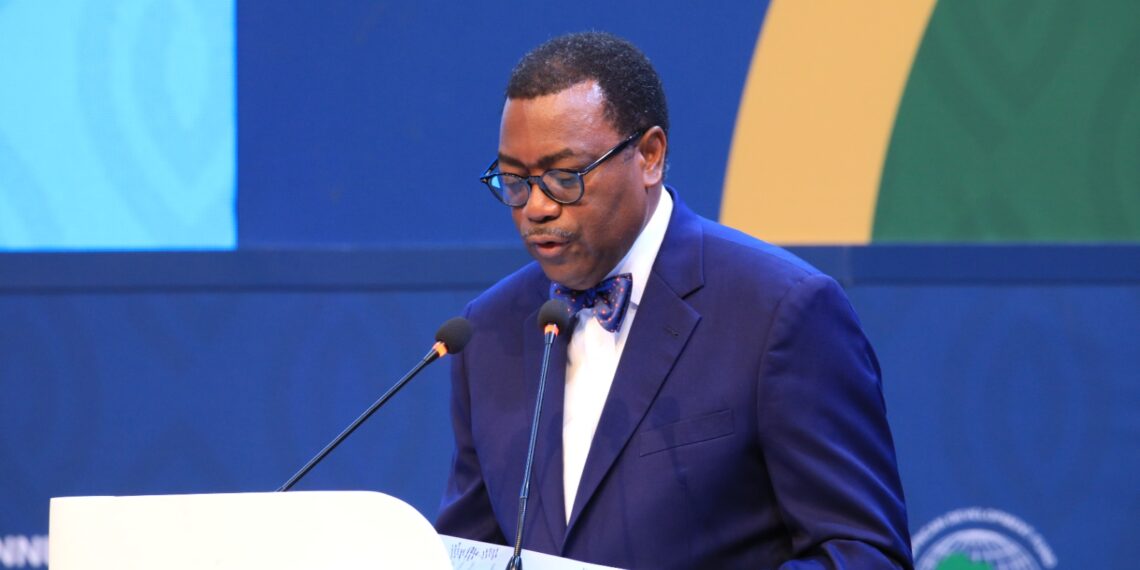Boosting agric finance in Africa
- Health SectorNewsboard
- No Comment
- 424
According to the World Bank, demand for food in Africa will increase by 70 per cent by 2050, and at least $80 billion annual investments, most of which needs to come from the private sector, will be needed to meet the demand. To achieve this, analysts say access to appropriate financial services is vital. DANIEL ESSIET looks at the activities of financial institutions supporting agricultural growth.
In Africa, the agricultural sector, according to Making Finance Work for Africa Partnership (MFW4A), accounts for 20 to-40 per cent of its Gross Domestic Product (GDP), and it is projected to be a $1 trillion industry by 2030.
However, MFW4A said the sector was facing the challenge of not being able to make significant agricultural transformation possible. The initiative said lack of capital for investment was contributing to lowering farmers’ productivity levels. MFW4A said the sector receives less than three per cent of banking credit.
Hence, agriculture and agri-food value chains are under pressure to respond to unprecedented challenges of population growth.
For this reason, most farmers are struggling financially as their performance depend on ability to obtain credit. Sadly, banks reject their loan applications, mainly because of insufficient collateral and high risk of default. This has helped to drive down African agriculture productivity, making it among the lowest in the world.
To meet the continent’s demand for food, according to the World Bank, it will require $80 billion in investments annually to be able to feed 9 billion people by 2050.
Indeed, there is a campaign for a significant amount of new investments to support a transformation into a more resilient and adaptive agriculture model.
For analysts, agric finance holds promise for banks looking for ways to make money.
Addressing the Financing in African Aquaculture session during the annual World Aquaculture Congress underway in Cape Town, South Africa, Senior Fisheries and Aquaculture Specialist at World Bank Group, Randall Brummett, said there was a profitable opportunity for banks to finance small to medium-sized agricultural enterprises in southern Africa and globally.
According to Brummett, the World Bank was negotiating with financiers to develop options that suit the needs of farmers globally.
At the heart of the discussion was the need to recalibrate agric financing, drive improvements to bring benefits of closer economic integration fairly.
Thus far, many innovative financing mechanisms that can catalyse growth in the agriculture sector are being deployed.
For example, the African Development Bank (AfDB) has embarked on an ambitious integration effort to create an agric finance system that will spur trade competitiveness and development.
AfDB, African Union-NEPAD, and the Fund for African Private Sector Assistance (FAPA), a multi-donor trust fund financed by the Governments of Japan and Austria, launched the African Agri-Business Engine (AABE) in Malabo.
To encourage technological innovation in the agriculture and agro-industrial sectors, AfDB announced the launch of a $800 million scheme to support a range of activities, including the staple crop-processing zones that are being developed by the United Nations Industrial Development Organisation (UNIDO).
The President,AfDB, Akinwumi Adesina, said the scheme was expected to reach some 40 million farmers over the course of the next 10 years, help improve infrastructure and access to finance, and reduce post-harvest losses.
As many as 25 funds want to invest equity in agricultural companies that promise high returns. One of them was Africa Agriculture and Trade Investment Fund (AATIF), an innovative public-private partnership dedicated to uplift the continent’s agricultural potential for the benefit of the poor.
The fund aims at improving food security and providing additional employment and income to farmers, entrepreneurs and labourers alike by investing patiently and responsibly in efficient local value chains. Its outstanding credit portfolio totals around $170 million.
Its investments have benefited over 30,000 small farmers, who have signed a contract with the financed farms since 2011.
In February last year, AATIF disbursed a $15million facility to Sterling Bank to grow its agricultural lending portfolio. The $15million loan was applied towards growing the bank’s agricultural loan portfolio.
AATIF is not alone. The German Development Bank (KfW), on behalf of the German Ministry of Economic Cooperation and Development (BMZ), along with AgDevCo and Root Capital, launched Lending for African Farming Company (LAFCo).
The company finances agricultural enterprises throughout sub-Saharan Africa to enhance local food security and stimulate inclusive economic growth in the region.
LAFCo currently has funding of $20million, which AgDevCo and KfW would like to see grow above $50million in the next few years as other investors come on board. LAFCo was developed with the support of Dalberg Global Development Advisors and in collaboration with the Grow Africa Finance Working Group.
Last year May, AgDevCo and KfW announced the appointment of Barak Fund Management Limited as the new manager of LAFCo. Barak is a leading alternative investment fund manager which has grown its presence in Africa since the launch of its flagship fund in 2009.
LAFCo will become the third dedicated impact finance fund managed by Barak. Barak Fund Management, has gone on to grow from an initial $300k Assets under management (AUM) in 2009 to $1.3 billion, covering private credit in sectors including agriculture, energy and mining, addressing sustainable impact investment.
At the same time, farmers across Nigeria are banging down the door of the Federal Government to address financial hurdle that has limited agricultural production.
With farm debt worth several millions, largely financed through bank debt to fund on-farm investments and maintain working capital, there has been increasing cases of the relationship between the banks and agriculture been more entrenched.
In some instances, farmers have been forced to sell property and other assets to settle bank debts.
In response, the National President, Federation of Agricultural Commodity Association (FACAN), Dr. Victor Iyama, has been in talks with the Federal Government and banks to make sure farmers are adequately financed.
He said banks had to reset their risk assessment criteria for agriculture to play a vital role in growing the econmy.
According to him, lack of funding is one of the constraints farmers face. He said a practical, comprehensive plan that combines credit opportunities would be very helpful.
To explore options in the agri-finance universe, farmers now utilise all kinds of financial institutions that specialise in agricultural loans. They also approach non-bank finance companies that offer land and equipment loans, and farmer-owned lending cooperatives.
But the Central Bank of Nigeria (CBN) is not sitting back. A recent response of the CBN Governor, Godwin Emefiele, was that the country needed to increase its level of bank credit to the agricultural sector by over 50 per cent within the next four years to boost food production.
Emefiele, said at the 13th Annual Banking and Finance Conference, organised by the Chartered Institute of Bankers (CIBN) held in September in Abuja, that the implementation of this was expected to drive the allocation to the sector to 10 per cent of the entire credit in the banking sector from the current four per cent.
He urged the banking sector to focus on increasing its support for the agricultural sector, as the Coronavirus pandemic had caused disruptions in global supply chains and food supply from other countries
Emefiele said some of the opportunities in the agricultural sector that banks should explore include addressing some of the existing gaps in the agriculture value chain like storage centres, transport logistics and technology platforms that can enable rural farmers to sell their produce directly to the markets.
This year, CBN announced that banks guaranteed 28,830 loans valued at N3.6 billion to farmers under its Agricultural Credit Guarantee Scheme Fund (ACGSF) from January to October 2020. CBN said the loan values had grown in the past 10 months to 26,830 loans worth N3.6 billion. The Agricultural Credit Guarantee Scheme Fund (ACGSF) was established by Decree No. 20 of 1977 and commenced business in April 1978. Its original share capital and paid-up capital were N100 million and N85.6 million respectively.
Hopefully, farmers are looking up to the Federal Government to provide interest-free loans as it promised. The government last month revealed plans to provide interest-free loans to farmers in the country.
The Minister of Agriculture and Rural Development, Sabo Nanono, who stated this while receiving the 2020 Wet Agricultural Performance Survey on October 18, this year, said his ministry would work with the CBN in providing the loans. Nanono said, “The ministry would support the farmers with agricultural inputs and zero-interest loans, through the CBN and other financial institutions to mitigate the effect of COVID-19 and the recent flooding in Kebbi, Jigawa and Kano states.’’
In other parts of Africa, banks are intensifying support for agriculture. For instance, Credit Agricola du Maroc (CAM) group announced that it has doubled the financing budget dedicated to the agriculture sector to MAD 8 billion ($875 million) from MAD 4 billion ($437.5million) for the 2020-2021 season.
The statement from the banking institution said the approach was in accordance with the guidelines of King Mohammed VI. Credit Agricola du Maroc said it doubled the budget to support agriculture campaigns from MAD four billion. The budget is in line with the “strategic axes of ‘Green Generation 2020-2030.
“The bank said the envelope should allow farmers, rural entrepreneurs, and agro-industrialists to ensure the continuity of their activities and generate growth. Credit Agricole Maroc will break down the budget into three parts. It will dedicate the first MAD 4 billion ($437.5 million) to agriculture via operating and investment credits to the equipment and modernization of farms, while MAD 3 billion ($328 million) will go to the agro-industry through operating credits and investments for agri-industrial and food projects.
It will dedicate the remaining MAD 1 billion ($109 million) to encouraging the creation of a middle class in rural areas. It will also dedicate it to developing entrepreneurship through financing adapted to economic activities in rural areas and projects generating income and added value, excluding agriculture. The bank said that the exceptional mobilisation of funds saw light thanks to the growth of customer deposits, international financing lines obtained from donors, and various bonds issued by the bank.
The bank also vowed that its subsidiaries would contribute to the implementation of the budget, recalling that the MAD 8 billion ($875 million) fund is an integral part of an “ambitious program” to support the 2020-2021 agriculture campaign. In Egypt, financial institutions support 13 agricultural projects worth $545.42million. Projects have reached over 1.5 million beneficiaries across 27 governorates, whilst providing 15,000 job opportunities.





